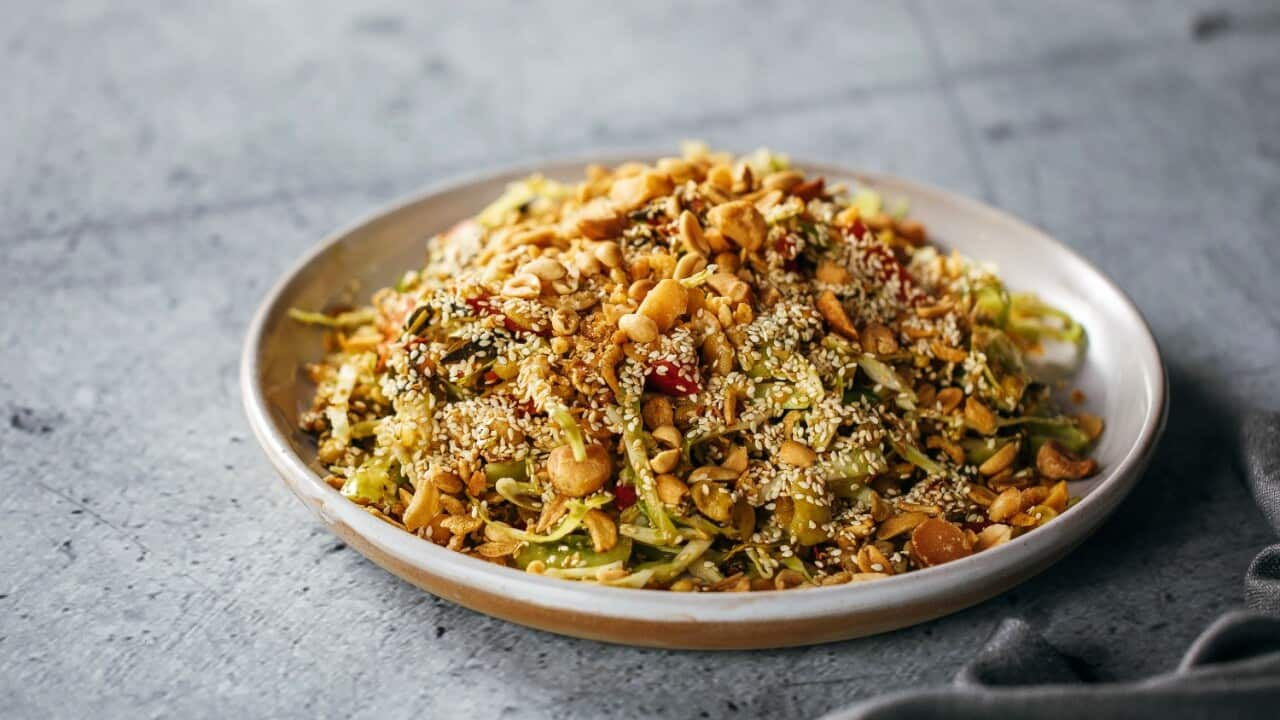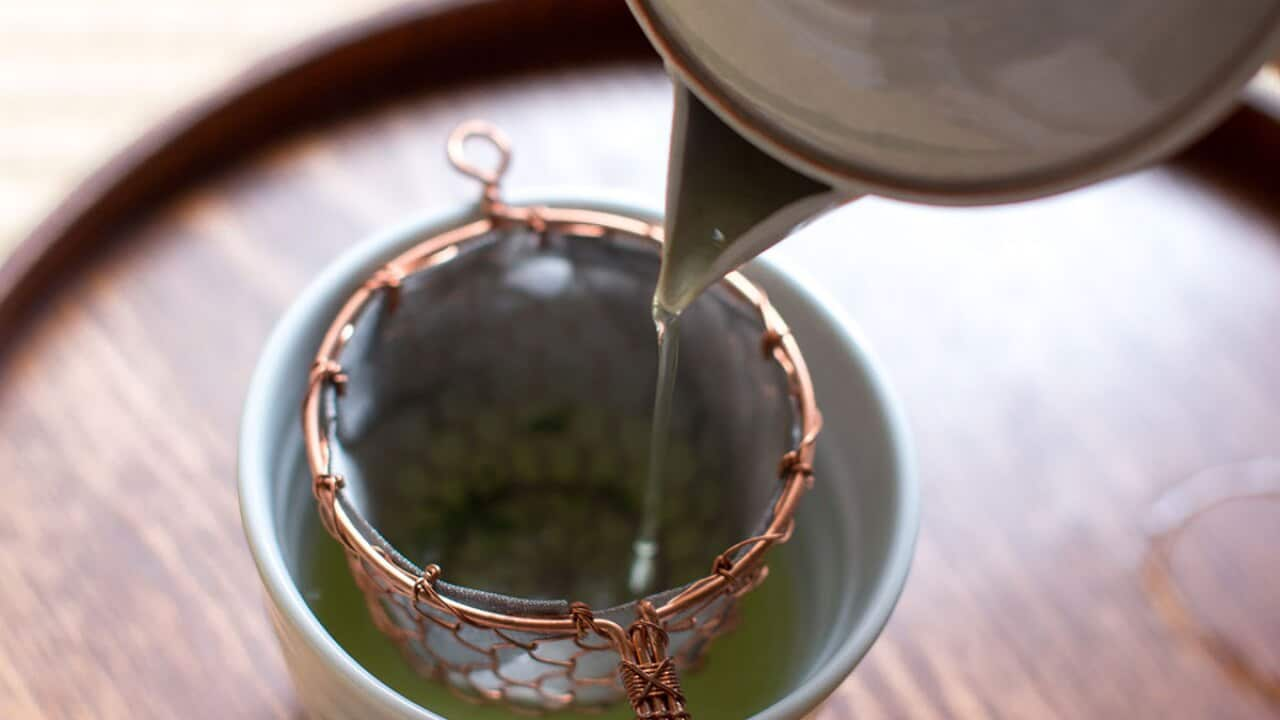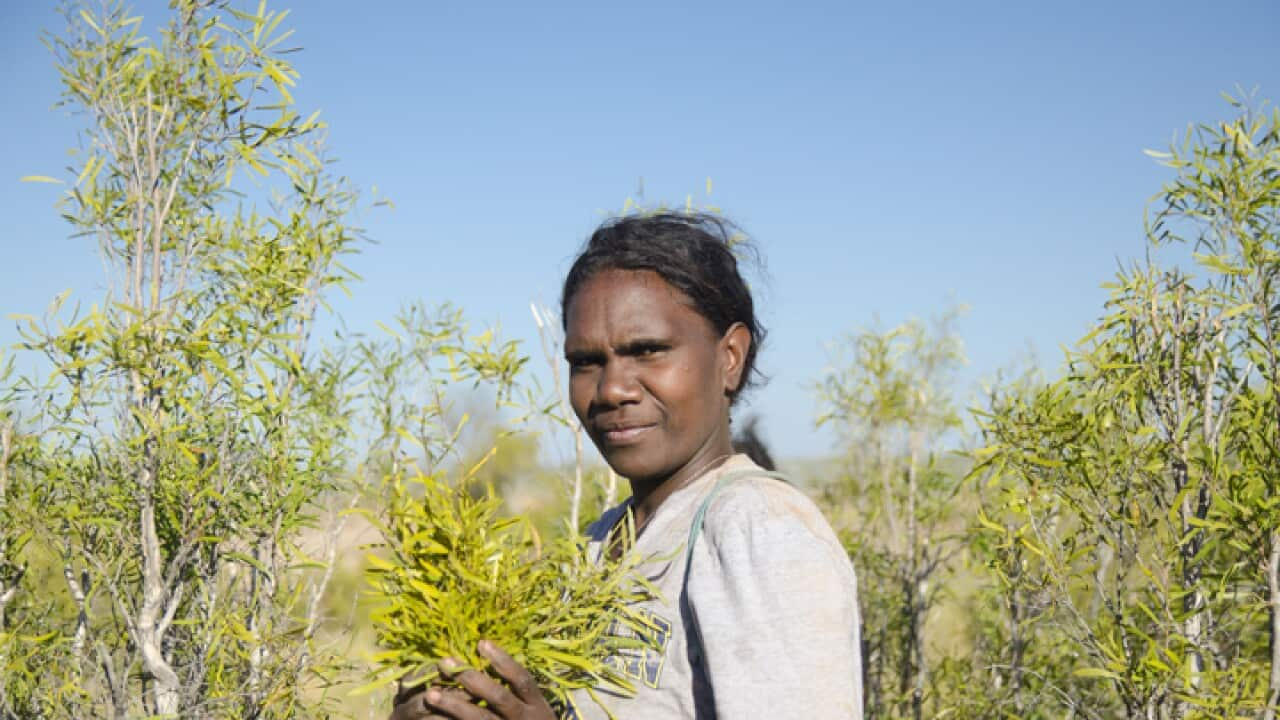LISTEN TO

Tea: Scandal water, life saver, yum cha essential
SBS Audio
25/10/202325:20
There's a Japanese word for owning too many books that you haven't yet read: . I wonder if there's an equivalent term for hoarding too much tea – and finding yourself with unfinished boxes and tins from many, many years ago?
If that word existed, I'd need to use it, because I've found myself accumulating quite a library of loose leaf. I've still got a peppermint, fennel and liquorice blend from , which is so old that it's outlasted the Hobart venue it's from (the Battery Point eatery ; I bought this brew more than eight years ago).
In the same way I keep optimistically buying more paperbacks and hardcovers, despite having a towering stack of unread books at home, I have a habit of adding to my tea stash, despite having so many loose-leaf varieties I could already brew.
Last year, I made a resolution to correct this: I planned to drink a different brew every day and finally use up all that neglected tea. Like most bright-eyed resolutions, I failed at consistently pulling it off. But over many months, I enjoyed drinking the loose leaf I'd hoarded – and being transported to different growing regions and tea shops I'd visited in the past.
I started my 'tea a day' project with a mellow ('dew light') planted in , Japan, and bought in the country's capital, at in March 2019.
During my visit to this ultra-modern venue, known as the "", each poured brew was presented with a smartly designed card, listing the tea's sweetness, bitterness and umami levels, and a QR code I could scan for its back story.
In 2022, when I opened the now three-year-old packet of Tsuyuhikari, it sent me back to this Tokyo encounter in 2019 – as did the just-as-old I also purchased from the store. With a name that translates as 'rich green', the tea produced an incredibly umami, seaweedy aroma when I finally brewed it. The instructions said to allow 10 minutes of steeping, but the drink quickly developed an intense colour – so I removed the strainer and sipped the tea soon after. It was so boldly flavoured, with sweet and bitter flourishes, it would've been "blow-your-lid-off" levels of strong at the recommended 10-minute mark.
I used to follow tea-brewing steps more strictly, and always assumed the beverage had to be just-boiled levels of hot to have flavour. But a visit to Tokyo's in 2018 completely altered my thinking. I remember owner – who spent – offering me gyokuro at a barely warm temperature, which unlocked the green tea's incredibly savoury taste. Sipping it was like savouring a plate of rich vegetables. Adding slightly hotter water to the same leaves created a more bitter brew. Then he used the tea again as the base of a citrus-infused cocktail, before finally serving the leaves like a salad you could enjoy with sauce and salt. This radically shook up all my assumptions.
Nowadays, I'll let tea steep in cold or lukewarm water for a long time, or let it brew quickly at a hotter temperature for a strong, punchy intensity. The cooler drink might be mellower, but the flavours have more dimension from developing over a greater timespan.
Digging up forgotten batches of loose leaf for this 'tea a day' project sent me across diverse terrain. Sun-dried tisane from Lore Australia was an Indigenous tea that evoked a sunny bushwalk among gum trees.
That tin of '' I bought in New York in 2016, from a Greenwich Village tea shop ? It somehow tasted like every leaky pot of jasmine tea that's comforted me at yum cha tables in Sydney.
As for the bag of wild-crafted white peony from from 2019? I'd been saving it for a magical moment because it sounded so exceptional. You need to be incredibly familiar with the decade-old tea trees in 's forest in eastern China to know where to pick the buds, and you have a very short time to harvest them. I remember Tea Craft's saying it tasted "like sticking the forest straight in your mouth". When I finally brewed it, it turned the colour of golden sunshine slipping through trees and reminded me of drinking chrysanthemum.
I've never visited the misty mountains of China, but the closest I get is via the tea selection of Sydney's . The shop is run by , who has been an international tea judge and was left with "totally green" fingers after picking leaves from Guangdong's , a place known for its oolong. After interviewing her for SBS Food in late 2019, I enthusiastically bought an assortment from her store and kept half for a 'special occasion' that didn't happen until three years later.
CHINESE TEA EXPERIENCE

Drink caramelised oolong and mandarin pu'er by this global tea judge
My 'tea a day' project became that occasion. I take her , and leave it to bloom in hot water; its twigs generate a dark, earthy kick when brewed. It's like they want to say, "hey, I'm a black tea, don't forget!" The drink is nice, knotty and strong – like a bitter chocolate. Its punchy smell is, like the tea itself, a brisk wake-up call. Bonus: the long twigs are easy to fish out from the strainer, so its easy-clean state makes me even more of a fan.
Like sticking the forest straight in your mouth.
There's a box of I bought from on the day Donald Trump got elected in 2016. I remember my friend, Blake, showing me how red the American electoral map was, and how we drank smoky serves of this complimentary iced tea in shock. When I prise open the metal lid to the tea box three US elections later, back in Sydney, the polarising leader is no longer in power. By coincidence, I try the tea on the day of the 2022 US mid-terms, and the tea's scorched smell hits me instantly, like strong fumes. I infuse an iced soda water with its roasted, dark leaves.

Musica Oriental Blend Earl Grey tea. Source: Supplied
Even though the tea is six years old, it's dark and brooding and strangely persistent, like an emo teen drama. Steep it for ages in fizzy water and it's like drinking a smoky grown-up Coca-Cola. I suspect it tastes better than the version that went viral, too.
There are also aged teas too, which when kept properly get better with age due to natural and slow oxidation.
I imagine tea professionals would never recommend drinking loose leaf that's been kept for over half a decade. So I wonder if an expert like Tea Craft's Tong would be offended by my very belated approach to drinking my stash of old tea?
"I hate waste and love resourcefulness," he says. "Also, best-before dates for tea are mostly arbitrary anyway; they are dried leaves and if you keep them out of moisture, sunlight and heat, you could be sweet forever. There are also aged teas too, which when kept properly get better with age due to natural and slow oxidation."

Tea leaves waiting to be brewed. Source: Supplied
"Old greens would be great as an iced-tea base, soda concentrate or even to cook with," Tong says.
So, if you have ageing boxes of loose leaf at home, don't overlook them. You don't have to try a new one every day, but you can revive those long-forgotten brews in a cup, warm pot or even a meal. Just add water.
TEA TALES

Telling my life story through tea










